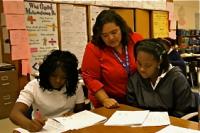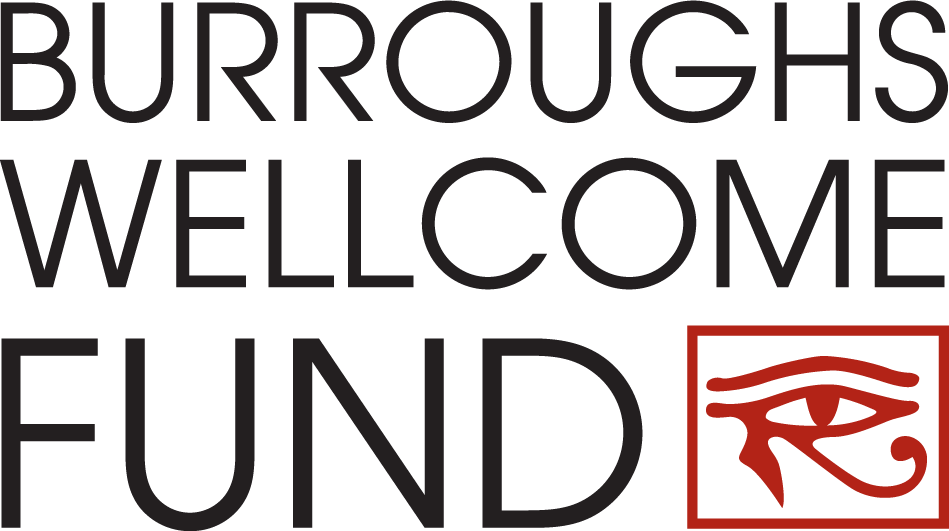 Claudia Walker cringes when she hears that dismissive expression so common in schools and workplaces across America. That oh-too-frequent excuse that comes up any time a student struggles with a problem and doesn’t feel empowered to work it through. That familiar saying, “Oh, I’m just bad at mathematics.”
Claudia Walker cringes when she hears that dismissive expression so common in schools and workplaces across America. That oh-too-frequent excuse that comes up any time a student struggles with a problem and doesn’t feel empowered to work it through. That familiar saying, “Oh, I’m just bad at mathematics.”
“No one ever goes around saying, ‘I’m not good at reading,’” says Walker, a fifth grade teacher at Murphey Traditional Academy in Greensboro. “That mentality that it’s OK to be bad at math, we need to get that turned around.”
Walker has spent her career doing just that. She has been teaching the fundamentals of mathematics to elementary school children so that they can succeed throughout their educational and career years. In 2009, the Burroughs Wellcome Fund awarded her the Career Award for Science and Mathematics Teachers. This award is a five-year grant worth $175,000, designed to recognize educators who demonstrate a solid knowledge of science and mathematics by giving them the tools necessary to enhance professional development and collaboration with other teachers.
Walker’s latest coup has been the opportunity to introduce an international standard of mathematics education at Murphey. Supported in part by a separate Burroughs Wellcome Fund grant, the school is one of six in North Carolina to launch a pilot program to teach mathematics using what is known as the Singapore method.
Based on curricula developed in Singapore, a country consistently atop international rankings in mathematics and science, the method emphasizes essential mathematical skills and an in-depth understanding of the fundamentals. Problem solving and the use of models is an important element of the approach.
This year, Walker started rolling out the first part of a six-year program to implement the new strategies. Kindergarten and first graders at Murphey have been the first to be exposed to this style of teaching mathematics. Next year, the school will expand the program to second grade, followed in subsequent years by third and fourth grade students.
“We think that the Singapore math pilot will have significant impact on our students’ ability to problem solve as they continue through the upper elementary grades,” said Murphey principal Rich Thomae. “The instruction that our students are getting in number sense in kindergarten and first grade this year will build a strong foundation for them to understand how to manipulate numbers using a variety of strategies.”
As Walker explains it, the core of the program is a fundamental understanding of the number 10. The Singapore approach begins there and uses concrete, pictorial and abstract methods to illuminate the first principles of arithmetic. Students are taught all the ways integers can be added to make ten—nine plus one, eight plus two, seven plus three—and from there they develop an understanding, at a conceptual level, of number manipulation.
When they know from the beginning the theory behind the numbers, the students are equipped to tackle higher level problems. By the time they reach fifth grade, they should feel empowered to take on tasks such as word problems, which are designed to challenge the students to think more about concepts, rather than the nuts and bolts behind the mechanisms of mathematics.
“I think the change will be they’ll be able to simply do the computations and recognize the problem without stumbling over the computations,” she says. “They are going to know how to actually understand a problem.”
Walker gives this as an example of a problem she might use to challenge students at the fifth grade level: You’re planning a party and you have a certain amount of money. You want to figure out how many items to get and how much you can spend on each. How many balloons you buy will impact the number of favors you can buy, for example.
By presenting the problem in this way, students are able to focus on the broader concept of the question and not the principles of mathematics, because they already have an instinctive understanding of those principles.
Rolling out the strategies behind this method will take years. Murphey received nearly $240,000 over six years to develop and implement a plan to bring the Singapore method to the school. This year, Walker is meeting with kindergarten and first grade teachers on a weekly basis to discuss and develop methodologies. Meanwhile, she meets monthly with teachers from the other grades who will be implementing the concepts in the classrooms within the coming years. They discuss Singapore and the concepts of the country’s approach.
At the beginning of the new system, Walker admits, some of the teachers “weren’t too convinced. “ But now they’re like, ‘You should see what these kids can do.’”
Antwaniece Williams is a first grade teacher at Murphey and has been working with Walker to develop the Singapore mathematics strategies for her students. The strategies fit well with the Common Core State Standards that North Carolina has adopted. The core standards are designed to be relevant in the real world and prepare students for success in college and their careers.
“When we are implementing Singapore math, we are also using the common core curriculum,” Walker says. “Our teachers in kindergarten and first grade are really ahead of the game.”
Williams already can see the differences.
“Our lessons are much more hands on,” said Williams. “We spend longer on one topic allowing students a chance to master it before we move on. Providing more concrete examples helps them conceptualize the math.”
Walker says that having received the BWF Career Award for Science and Mathematics Teachers has opened doors for her and allowed her to accomplish many things. It was after a conference supported by her award, in fact, that she learned about the Singapore method and the Burroughs Wellcome Fund’s support in implementing it throughout North Carolina.
“It’s been unbelievably amazing,” Walker says. With money from her award, she has been able to bring technology to the school. Now, all but two of the core classrooms have projectors. She has gone to professional development classes. And she has also been able to take a core group of five teachers to technology conferences.
In addition to her honors as a recipient of the Career Award for Science and Mathematics Teachers award, Walker is also on the Teacher Advisory Council for the National Academy of Sciences. She has been able to interact with other teachers from across the country, aiding the flow of ideas and bringing new ones back to Greensboro.
She sees the big picture in what she is doing with the help of Burroughs Wellcome Fund. With every new project, she is chipping away at that notion that it’s OK to be bad at mathematics.
“We’re finally making sure mathematics is a priority,” she said.
